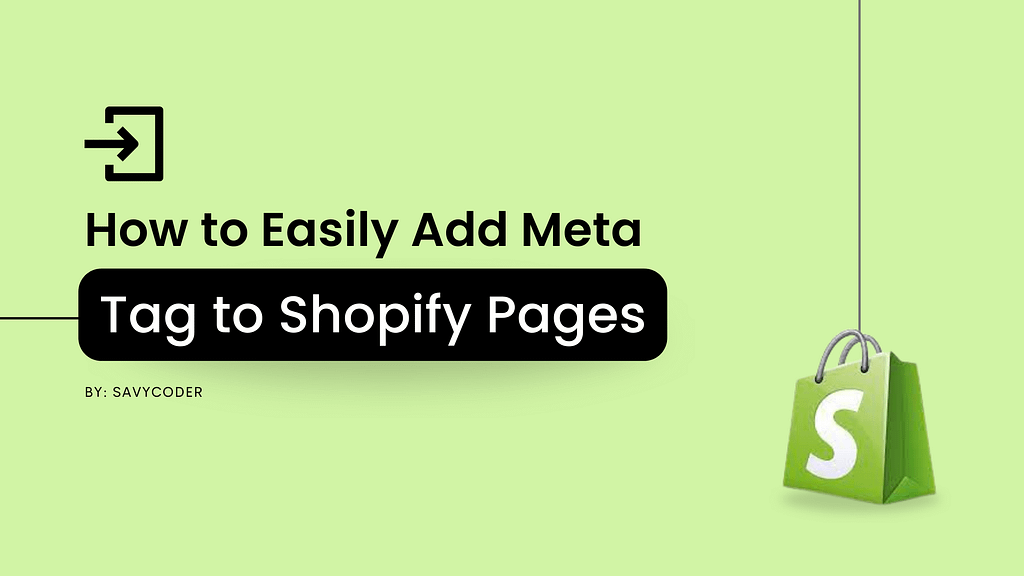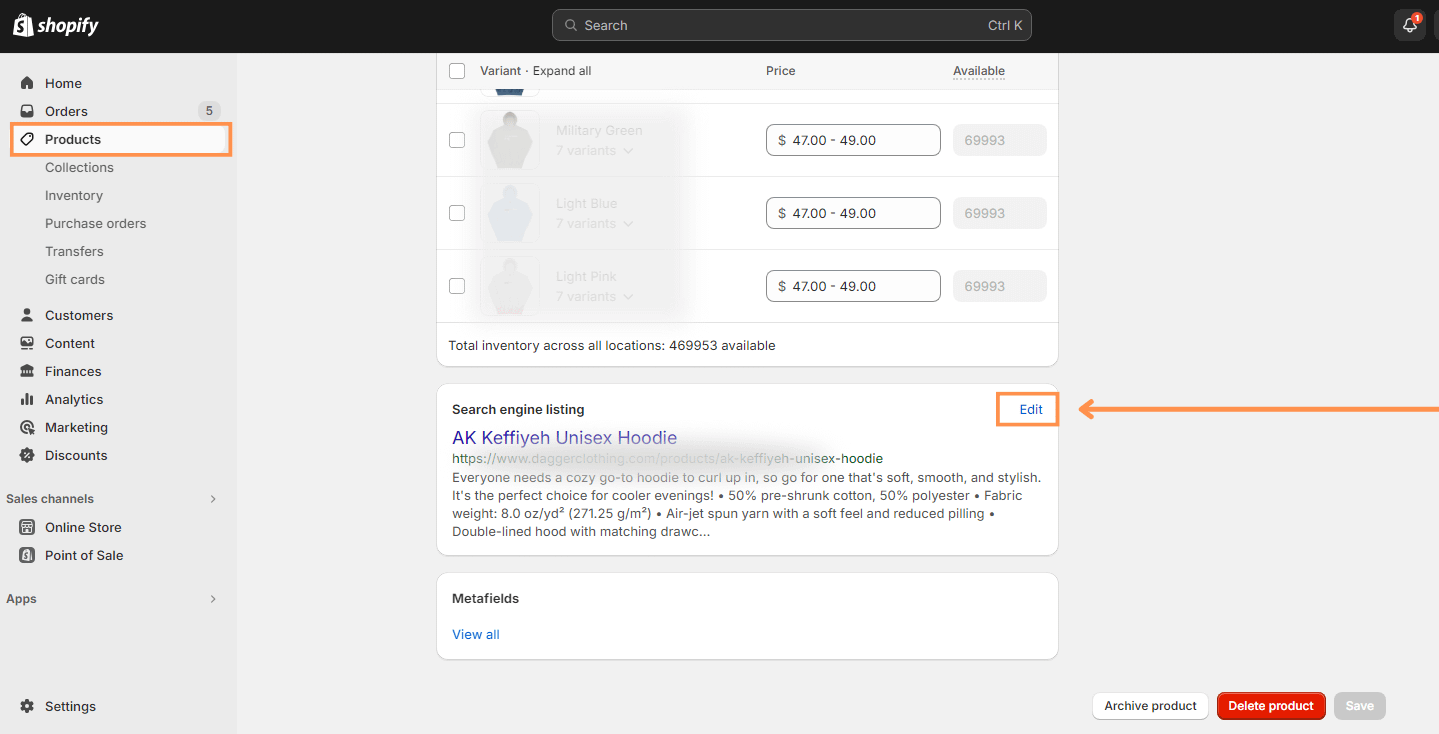How to Add Meta Tag to Shopify Easily now?
Add meta tag to Shopify in 3 easy steps.
- March 3, 2024
Meta tags are crucial in optimizing e-commerce websites for search engines and improving user click-through rates. This article provides actionable insights on how to add meta tag to Shopify store.
To increase traffic and sales, Shopify owners and e-commerce developers must know how to add and manage these tags efficiently.

How to Add Meta Tags to Shopify?
Here’s a list of all the topics discussed in this post. Feel free to click on any of them to jump directly to the section you’re most interested in.
Understanding Meta Tags
Meta tags are snippets of text that describe a page’s content. They don’t appear on the page front but only stay in the page’s backend code. The two important meta tags are the title tag and the meta description.
The title tag defines the title of a document used on search engine results pages (SERPs) to display preview snippets for a given page. Meta description, on the other side, provides concise explanations of the content of web pages and is also used on SERPs.
How to Add Meta Tag to Shopify?
In Shopify, you can add meta tags easily without editing the HTML code. Follow these steps to add the meta tag to the Shopify store:
- Log in to your Shopify dashboard.
- Navigate to the “Online Store” section, then click on the “Pages” or “Blog posts” tab where you want to add or update meta tags.
- Scroll down to the “Search engine listing preview” section.
- Now click on Edit to add meta tags and descriptions.
Let’s see one example of how to add meta tag to Shopify product page.
How to Add Meta Tag to Shopify Products?
In this example, we will see how to add meta tag to a product page in Shopify. Click on the Products tab, open any product, and scroll down to the “Search engine listing” section. Click on Edit, as shown in the below image.

Here, you can edit the webpage title and meta description. These changes will directly affect how your product pages appear on SERPs.
Writing compelling and keyword-rich meta tags for your products can significantly improve your store’s visibility and attract more potential customers.
How to Add Meta Tag to Shopify Pages and Blogs?
Follow the same steps to add meta tags to other pages in Shopify. You will find the collections and blog posts section under the online store section.

Scroll down the pages to the “Search engine listing preview” section and input your desired title and meta description. For collection pages, focus on keywords that describe the collection. For blog posts, highlight the main content or the value the reader will get from the article.

Add Custom Meta Tag to Shopify
For those who want more control over their SEO, Shopify also allows adding custom meta tags. You can add the custom meta tag to the Shopify store by editing your theme’s HTML code.
However, this approach requires a good understanding of HTML and should be careful to avoid errors. Additionally, you can use Shopify apps to manage and automate adding meta tags, offering more advanced functionalities without coding.
Conclusion
Adding meta tags to your Shopify store is a fundamental aspect of SEO that can significantly impact your site’s visibility and success. This article discussed adding meta tags to Shopify products, collections, and blog pages using 3 simple steps.
By following this guide, Shopify owners and e-commerce developers can ensure that their products and content are optimized for search engines, leading to increased traffic and sales.
Remember, SEO is an ongoing process, and regularly updating and optimizing your meta tags is crucial to staying competitive in the digital marketplace.
I hope you will find these helpful. If you are stuck anywhere then SavyCoder is just a text away to help. Approach via contact us.
If you like this article then please subscribe to the newsletter below.
Stay Ahead with AI & Productivity Insights
Get the latest tools and tips in AI and productivity delivered straight to your inbox.
Recent Posts
-
10 Easy Gemini AI Prompts to Generate Viral Boy Images
-
How to Humanize AI Content: Easy Steps That Actually Work
-
The Six Different Types of AI Agents You Need to Know: Easy Guide!
-
How to Write a Resignation Email Template? 10 Professional Samples
-
Is selling on Etsy Worth it? Revealing Truth About Profits & Risks
-
Elevate Pay Important Update: Move Out Your Funds Before It's Too Late!
Freelancing
-
Is selling on Etsy Worth it? Revealing Truth About Profits & Risks
-
Elevate Pay Important Update: Move Out Your Funds Before It's Too Late!
-
New Ways to Earn Money Online in Pakistan Without Investment
-
The Best Shopify Payment Gateway in Pakistan - Sell Globally Now!
-
Easypaisa Payment Gateway: All You Need to Know to Boost Sales
-
10 Only the Best Legit Side Hustles for Women Now
Shopify
-
How to Set Up a Shopify Store without a Template? All You Need to Know
-
How to Cancel Shopify Subscription? Easy Tutorial Now!
-
How to Add Another Admin to Shopify? Quick Tutorial!
-
How to add Store Locator on Shopify for FREE? Easy Tutorial!
-
How to Create and Send Email Campaigns in Shopify for FREE?
-
How to Create and Use Collections in Shopify? High Traffic!

